Overview
This article presents essential server cooler solutions specifically designed for electronics engineers, emphasizing various cooling technologies, including air cooling, liquid cooling, and immersion cooling. It underscores the critical need for selecting appropriate cooling methods tailored to server density and energy efficiency. Supported by data illustrating the projected growth of the cooling technology market, the discussion highlights the advantages of advanced thermal management strategies in enhancing performance and sustainability within data centers. By understanding these technologies, engineers can make informed decisions that optimize server performance and energy consumption.
Introduction
The rapid evolution of technology in the electronics sector presents significant challenges in thermal management, particularly for electronics engineers responsible for optimizing performance in high-density server environments. This article reveals nine essential server cooler solutions designed to enhance efficiency while meeting the increasing demand for sustainability in data centers. As engineers confront the complexities of cooling technologies, a pressing question emerges: which innovative solutions will effectively address their unique thermal management needs while ensuring reliability and energy efficiency?
Gagner-Toomey Associates: Comprehensive Cooling Solutions for Electronics Engineers
Gagner-Toomey Associates stands at the forefront of innovative temperature regulation strategies, meticulously tailored to address the unique challenges faced by electronics engineers. By emphasizing critical elements such as power management and thermal regulation, the company presents a diverse array of manufacturers, ensuring engineers have access to cutting-edge technologies that significantly enhance performance and efficiency in electronic devices.
The global , valued at approximately USD 7.8 billion in 2023, is poised for substantial growth, projected to expand at a compound annual growth rate (CAGR) of 12.4% through 2030. This growth is driven by advancements in electronics and an increasing demand for effective thermal management solutions. Notably, energy-saving refrigeration units can reduce energy consumption by as much as 30%, underscoring the urgent need for improved technologies as energy usage in electronics is anticipated to double by 2030.
Gagner-Toomey’s unwavering commitment to quality in customer service and product representation positions them as a trusted ally within the electronics sector, facilitating the successful implementation of innovative temperature management technologies that meet the evolving demands of engineers.
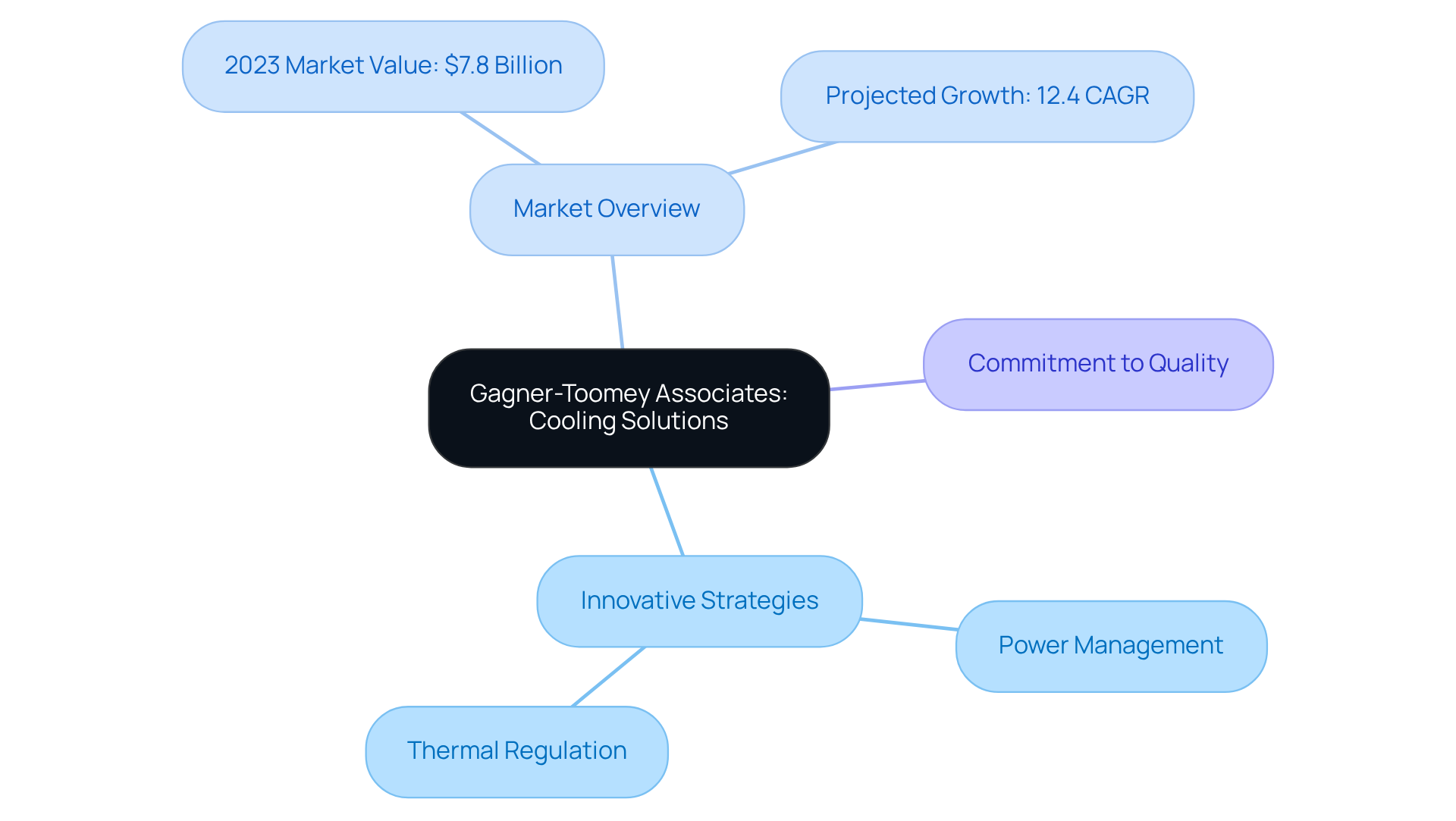
Air Cooling Systems: Cost-Effective Solutions for Server Management
Air cooling methods stand out as one of the most economical solutions for regulating server temperatures, particularly when utilizing the server cooler products from Gagner-Toomey Associates. These systems use advanced fans and ventilation, along with a server cooler, to circulate cool air around server components, effectively dissipating heat.
As the world’s largest producer of standard and custom air-movers, Gagner-Toomey Associates offers a comprehensive range of DC input tube axial fans and centrifugal blowers, all optimized for performance, effectiveness, and low noise levels.
While air temperature regulation systems usually have a , a server cooler may face challenges with high-density server configurations. Engineers must consider factors such as airflow design and equipment arrangement to enhance the performance of air temperature control systems.
By utilizing Gagner-Toomey’s extensive thermal management strategies, they can significantly improve temperature regulation efficiency.
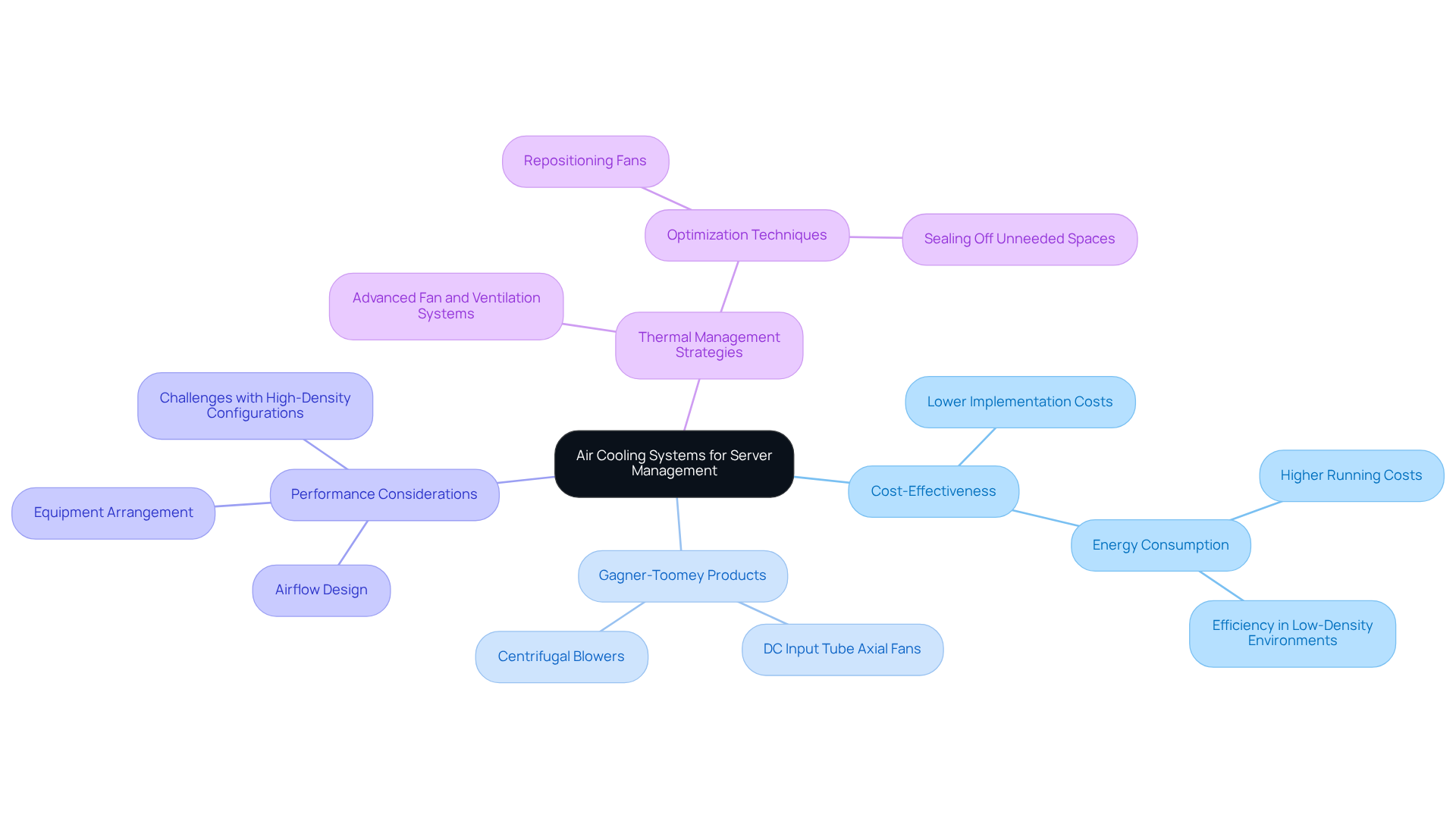
Liquid Cooling Solutions: Enhanced Performance for High-Density Servers
Liquid temperature management solutions, such as a server cooler, present substantial advantages for high-density server environments, particularly in situations where traditional air temperature regulation methods encounter limitations. By utilizing a liquid coolant in a server cooler to directly absorb heat from server components, these systems effectively sustain optimal operating temperatures, even under peak workloads. This approach not only enhances temperature management efficiency through the implementation of a server cooler but also significantly reduces , aligning with the sustainability goals of data centers.
Research indicates that certain data centers have achieved a reduction in power usage effectiveness (PUE) by as much as 10 percent when implementing liquid solutions compared to conventional air methods. Furthermore, the liquid temperature regulation market is anticipated to expand by over 24% annually over the next five years, underscoring its growing significance in the industry.
Effective implementations, such as the integration of a Cooling Distribution Unit (CDU) within a comprehensive liquid temperature management strategy, exemplify the practical efficiency of these systems. As the demand for AI and high-performance computing escalates, the necessity for a server cooler to manage liquid temperature regulation becomes increasingly pronounced. Engineers are encouraged to assess the specific temperature regulation requirements of their systems to identify the most suitable liquid temperature control solution, ensuring that both performance and energy efficiency are optimized.
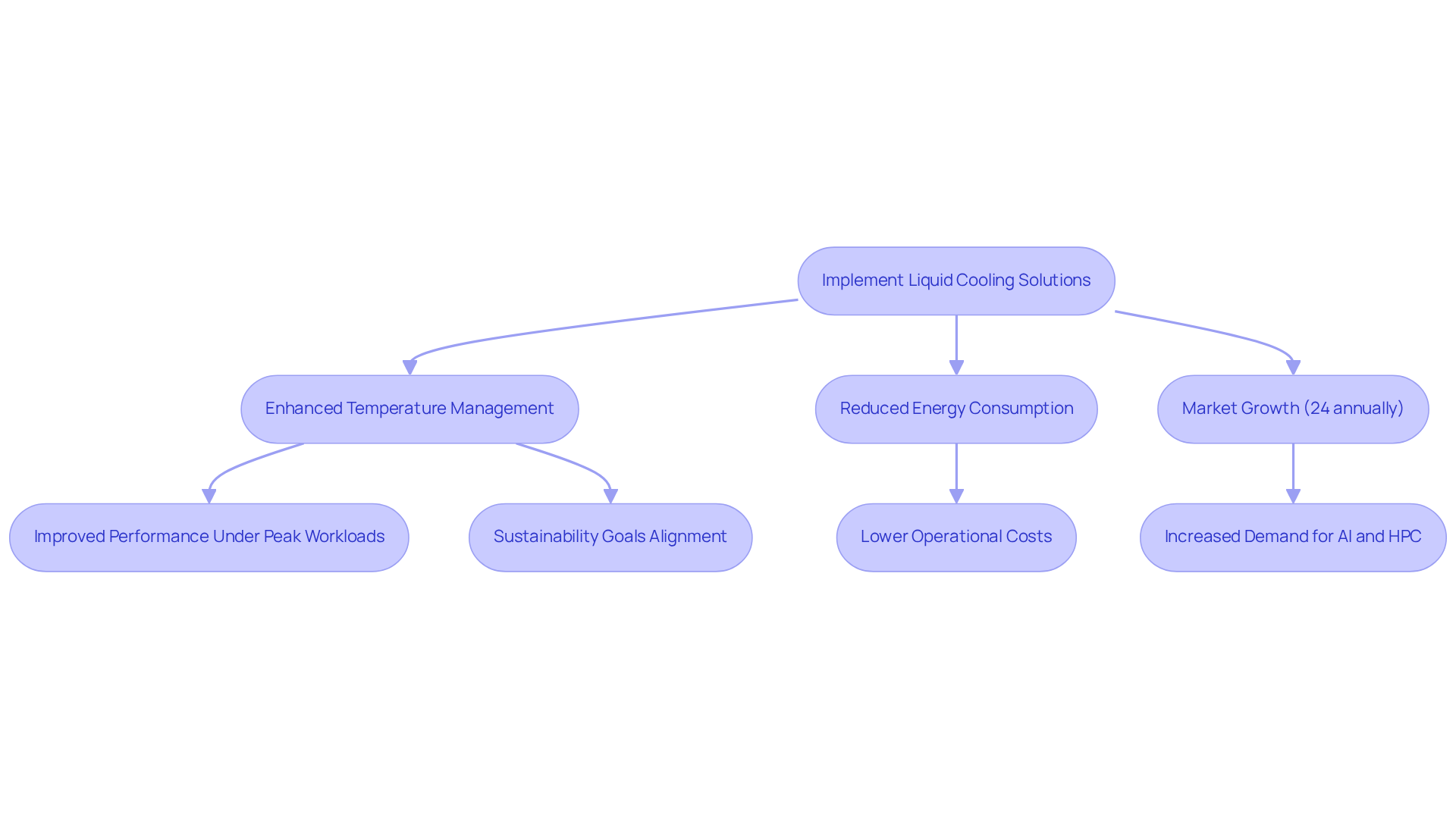
Immersion Cooling Technology: Revolutionizing Data Center Efficiency
Immersion temperature regulation technology is revolutionizing data center efficiency by submerging servers in a dielectric fluid that effectively absorbs heat. This innovative approach facilitates greater server densities and significantly enhances , eliminating the need for conventional temperature regulation components such as fans and heat sinks. Notably, immersion temperature regulation can achieve a Power Usage Effectiveness (PUE) as low as 1.02, leading to substantial energy savings—up to a 95% reduction in temperature management power consumption compared to traditional methods.
Furthermore, this technology minimizes noise levels, optimizes space, and extends equipment lifespan, thereby creating a more conducive working environment. Given the increasing demands of high-performance computing and the rise of data-driven applications, engineers must seriously consider immersion techniques for environments characterized by high heat output and limited space.
Successful implementations in data centers have demonstrated its efficacy in managing thermal loads, making it a compelling choice for modern infrastructure. Gagner-Toomey Associates, the largest producer of standard and custom air-movers globally, offers an extensive array of temperature control solutions, including DC input fans, centrifugal blowers, and advanced thermal management products.
As Kun Zhou notes, ‘Single-phase immersion refrigeration technology can lower initial data center expenses by 60%, energy usage for temperature regulation by 95%.
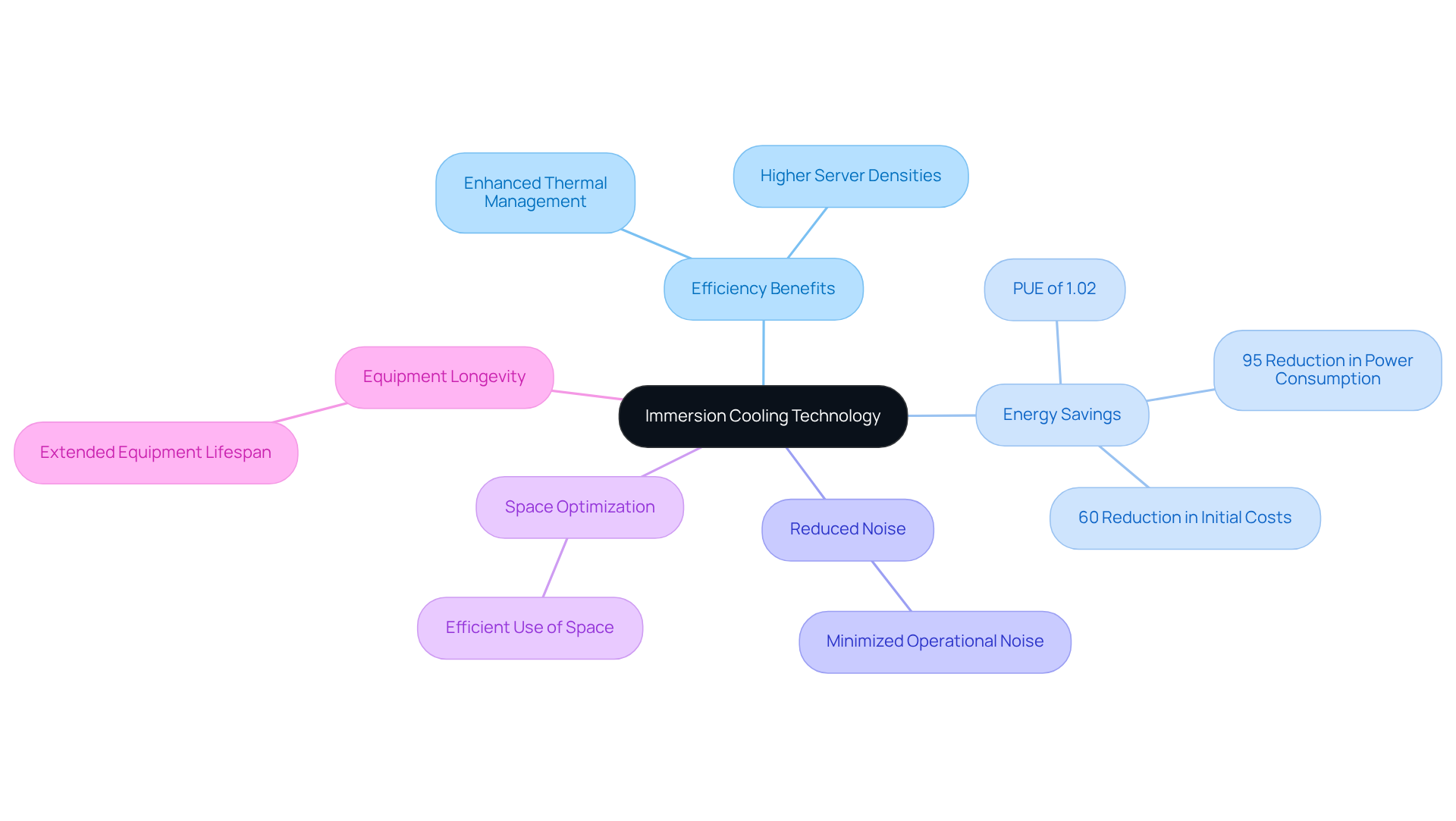
Server Rack Cooling Fans: Essential Components for Temperature Control
Server cooler systems are essential components that play a vital role in regulating temperature within server environments. These fans function by expelling hot air and drawing in cooler air, thereby ensuring that server components operate within safe temperature ranges with the help of a server cooler. When selecting fans for effective temperature regulation, engineers must consider several factors, including:
- Airflow capacity
- Noise levels
- Energy performance
- Compatibility with existing setups
Gagner-Toomey Associates, a leading provider of innovative temperature control solutions, presents an extensive range of products, including DC input tube axial fans, which range from 15 to 280mm, and centrifugal blowers, from 15 to 225mm. These products are optimized for performance and efficiency, making them particularly suitable for electronics applications.
The initial step in this process involves conducting a thermal analysis to ascertain the heat generated by a device. Strategic fan placement and configuration can significantly enhance the overall effectiveness of a temperature regulation system. For instance, the implementation of hot/cold aisle containment effectively prevents the mixing of hot and cold air, further improving temperature control performance.
Additionally, variable-speed fans, which adapt to varying loads, offer significant advantages by enhancing energy performance and reducing operational costs. Gagner-Toomey’s solutions include integrated custom temperature regulation options tailored to meet specific needs, ensuring optimal performance.
Research indicates that well-organized refrigeration setups can reduce server fan energy consumption by approximately 40%, underscoring the importance of meticulous design in boosting energy efficiency and performance. Ultimately, a well-crafted that incorporates a server cooler not only extends the lifespan of equipment but also minimizes emergency service calls, thereby ensuring uninterrupted operation in high-density server environments.
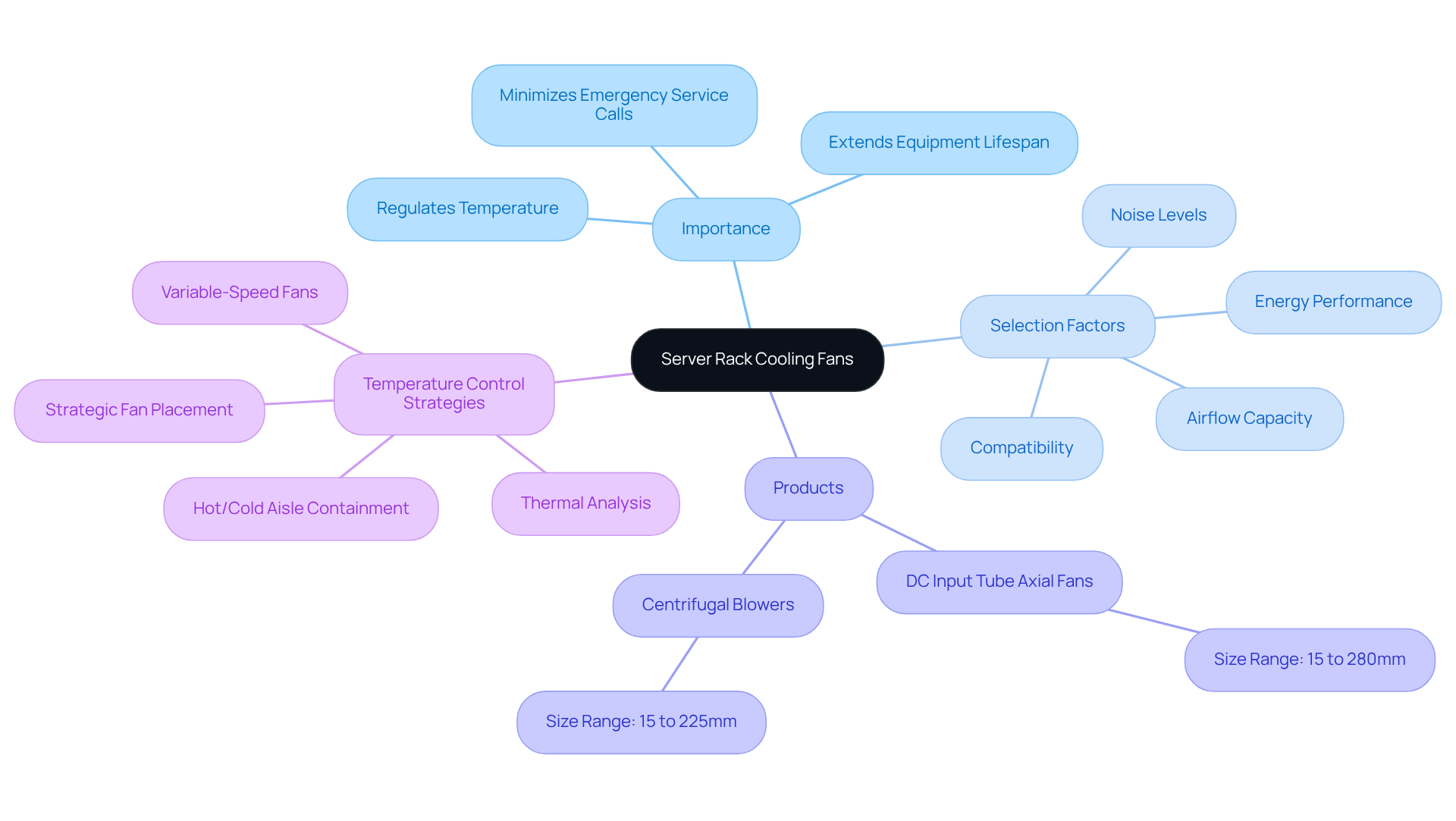
Key Components of Server Cooling Systems: What Engineers Need to Know
To ensure effective thermal regulation, engineers must grasp the critical elements of server cooler and temperature control. The essential components include:
- Server cooler
- Ventilation fans
- Heat sinks
- Liquid temperature regulation systems
- Thermal sensors
Each element plays a pivotal role in maintaining optimal temperatures and preventing overheating—an important consideration given that approximately 55% of the total energy consumed in data centers is dedicated to regulating IT equipment, with the assistance of a server cooler. Research indicates that insufficient temperature regulation can lead to operational failures, highlighting the necessity for robust thermal management solutions like a server cooler.
Thermal sensors, in particular, are crucial for monitoring temperature fluctuations and enabling proactive temperature regulation within a server cooler. By integrating these sensors into temperature management systems, engineers can access real-time data on thermal performance, allowing for timely adjustments that enhance the efficiency of the server cooler.
With the projected to grow at a CAGR of 11.8% from 2025 to 2032, understanding the interplay between these components empowers engineers to develop tailored thermal management strategies, incorporating a server cooler, that meet the distinct needs of various server configurations and workloads, ultimately boosting reliability and performance in data center operations. Furthermore, it is vital to consider the challenges associated with implementing advanced temperature control systems, such as the risk of leaks and the requirement for specialized maintenance, to ensure optimal functionality.
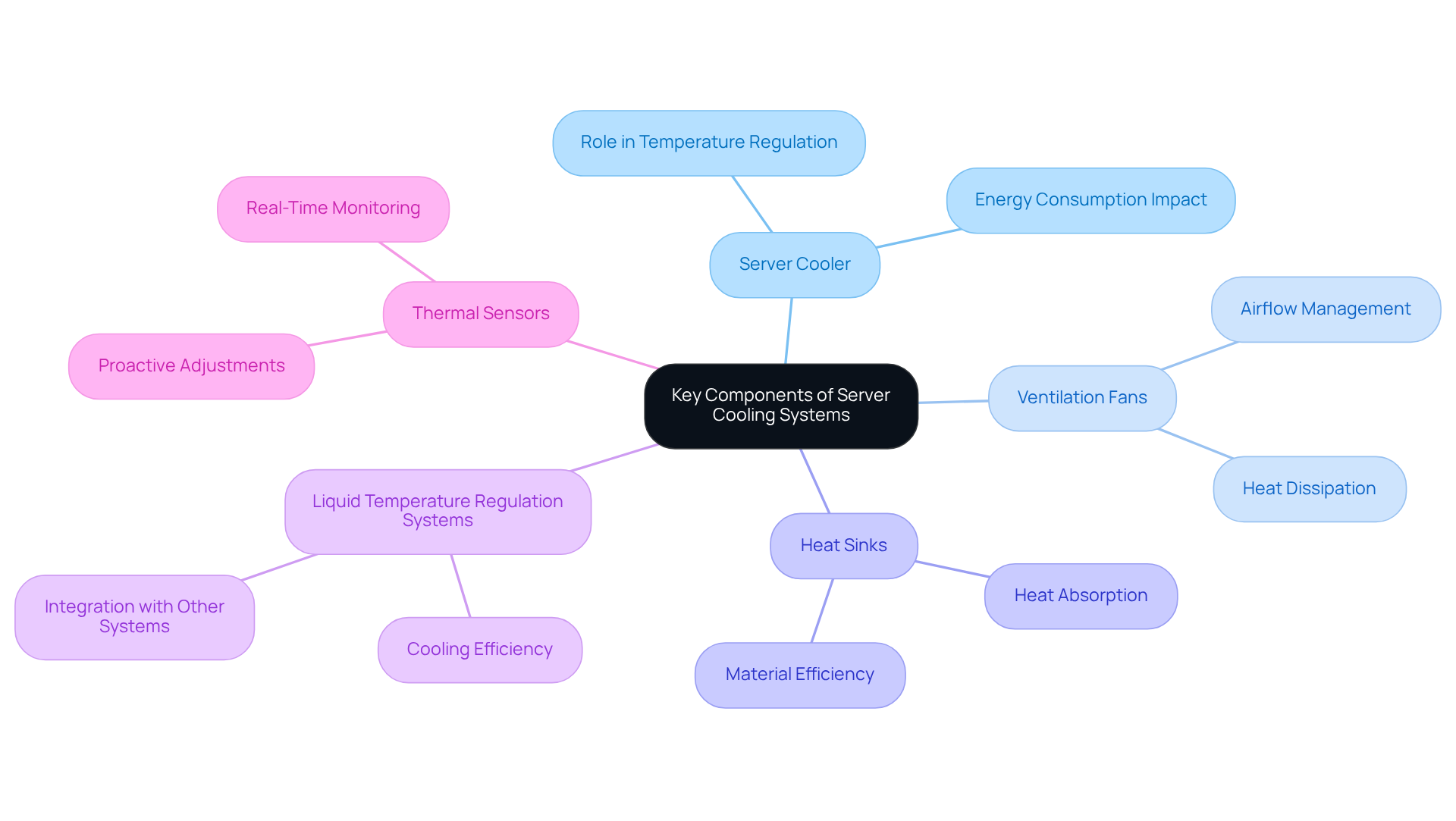
Choosing the Right Server Cooling Solution: Key Considerations for Engineers
Selecting an effective server temperature management solution necessitates a thorough assessment of several critical factors by engineers. The density of the server setup is a primary consideration, as it significantly influences temperature management requirements. With the rise in server densities comes an increase in heat output, which necessitates the implementation of to manage temperature and sustain optimal performance.
Additionally, energy conservation is a vital aspect, given that refrigeration systems can account for nearly 40% of a data center’s total power consumption. Budget constraints also factor into decision-making, compelling engineers to find a balance between performance and cost-effectiveness. Furthermore, understanding the specific temperature control needs of the equipment, along with the layout of the data center, is essential for optimizing airflow and heat dissipation.
By meticulously evaluating these factors, engineers can identify a temperature control solution that enhances operational efficiency while aligning with sustainability goals, particularly as the demand for high-density configurations is projected to rise in 2025 and beyond.
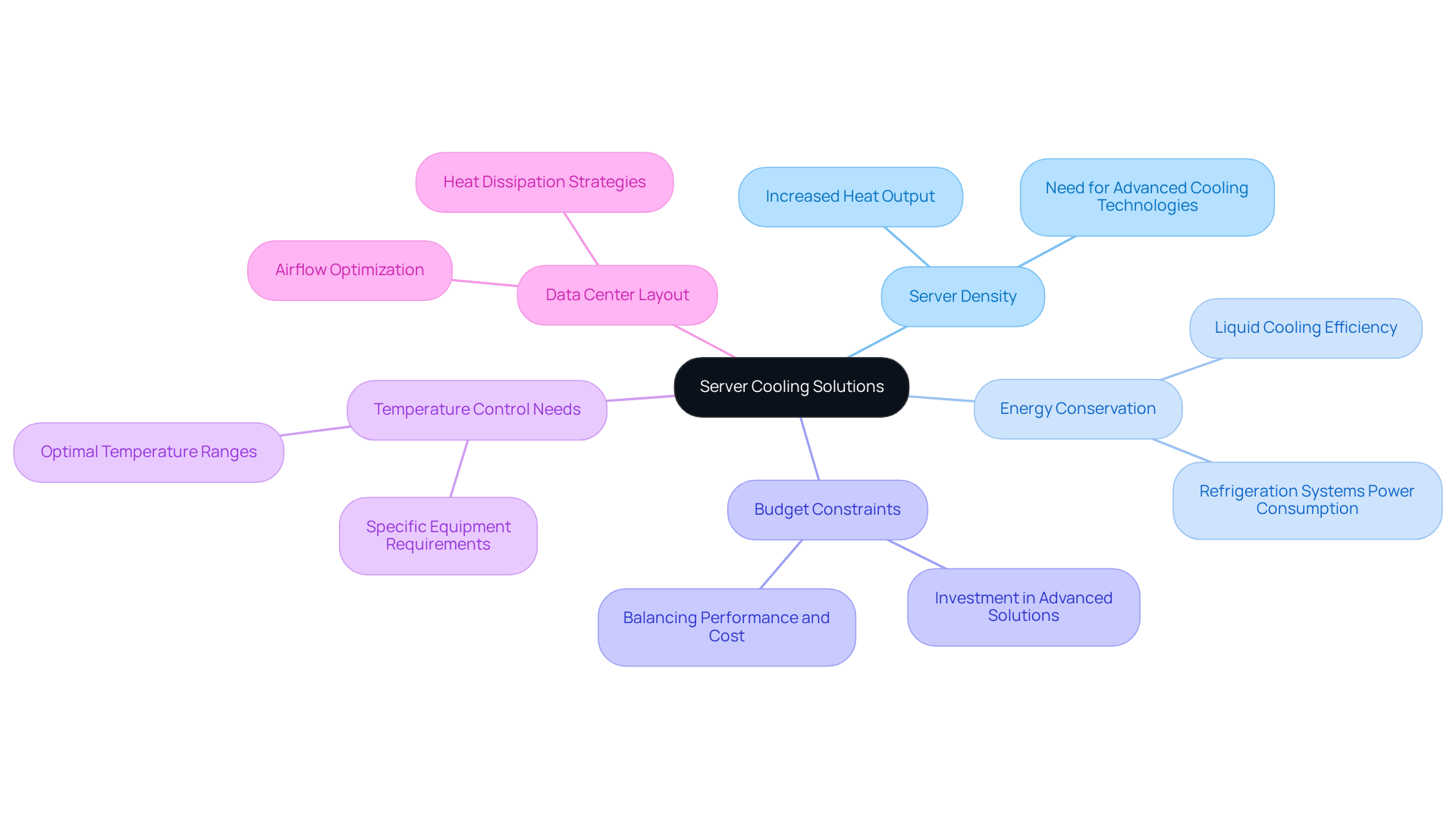
Dedicated IT Cooling Systems: Ensuring Reliability and Uptime
Dedicated IT temperature control solutions are specifically designed to meet the unique thermal requirements of data center equipment, ensuring both reliability and uptime. These systems provide consistent airflow and precise temperature regulation, dynamically adjusting to the varying heat loads generated by IT equipment.
By implementing specialized temperature control measures, engineers can effectively protect critical infrastructure from excessive heat, thereby minimizing the risk of interruptions. This is essential for maintaining and maximizing performance.
The integration of these solutions not only safeguards vital systems but also enhances the overall resilience of data center operations.
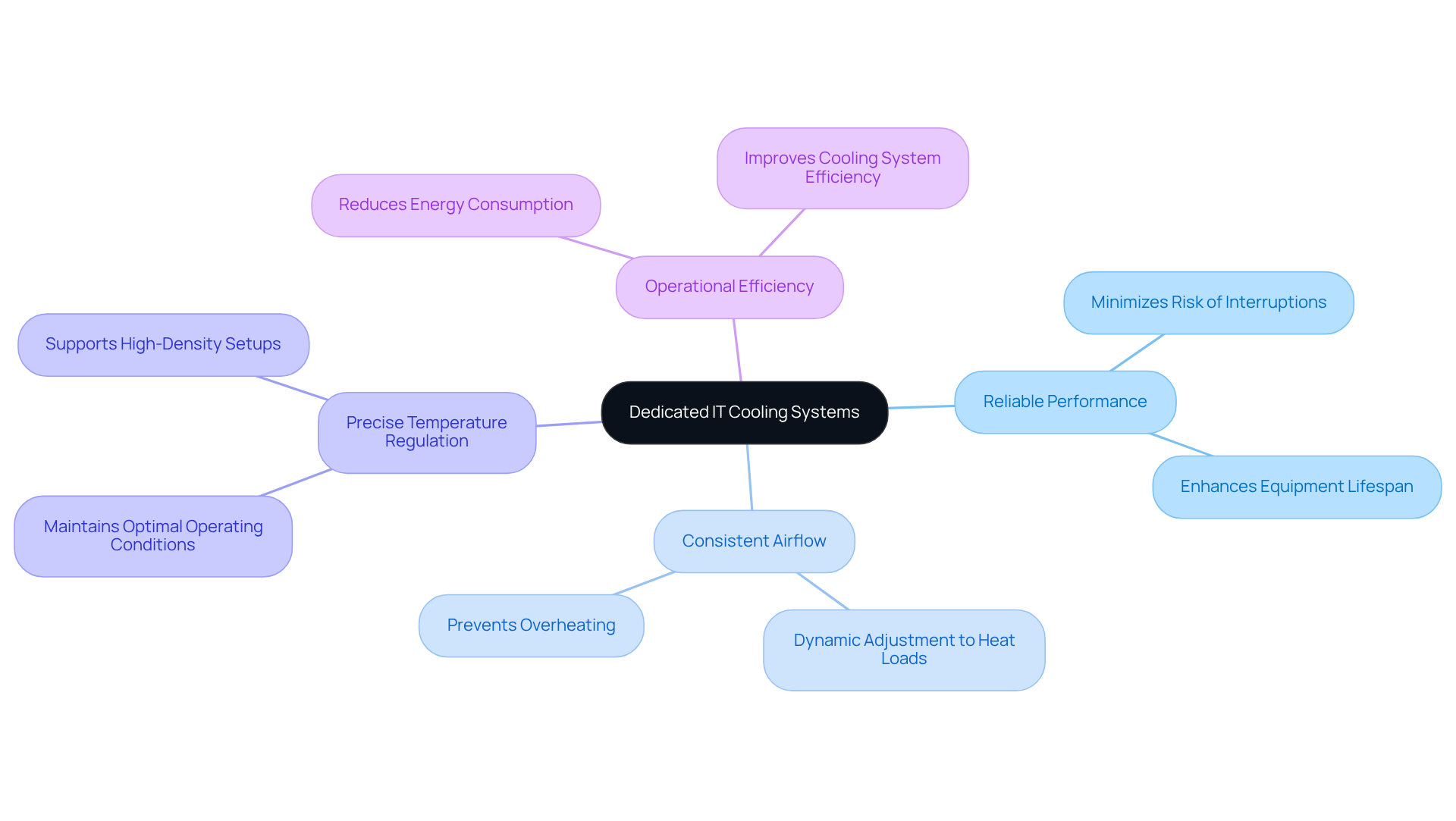
Thermal Sensors and Smart Control: Optimizing Server Cooling Efficiency
Thermal sensors and intelligent control mechanisms play a pivotal role in optimizing server temperature regulation. By continuously monitoring temperature and humidity levels, these systems can adjust temperature settings dynamically in real-time, ensuring that servers operate within optimal temperature ranges. This proactive strategy not only but also prolongs the lifespan of IT equipment.
Research indicates that the integration of intelligent control technologies can lead to energy savings of up to 62% in air conditioning units. Therefore, engineers must prioritize the implementation of these advanced technologies in their temperature management systems to enhance performance and significantly reduce energy costs.
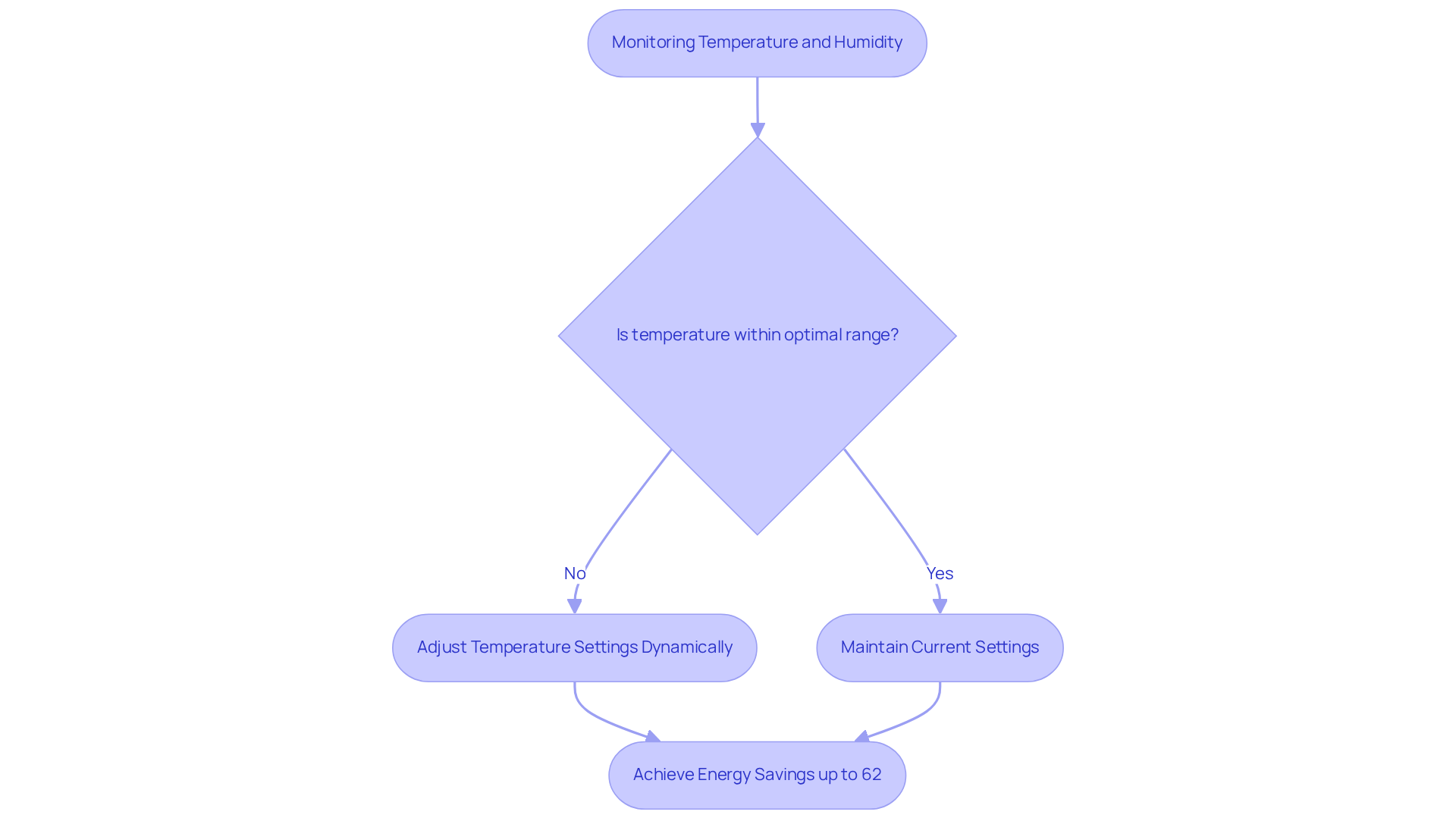
Emerging Trends in Server Cooling: Innovations Every Engineer Should Follow
Emerging trends in server temperature regulation are marked by significant advancements in liquid temperature management technologies, including:
- direct-to-chip methods
- hybrid approaches that merge air and liquid techniques
The integration of AI and machine learning into temperature management systems is gaining momentum, facilitating more efficient and adaptive climate control solutions. Notably, AI-driven temperature regulation can reduce data center energy consumption by up to 40%, underscoring the considerable impact of AI on energy conservation within data centers.
With the anticipated to expand from USD 11.08 billion in 2025 to USD 24.19 billion by 2032, at a CAGR of 11.8%, it is imperative for engineers to remain abreast of these innovations to uphold competitive and effective temperature management strategies in an ever-evolving technological landscape.
Successful applications of AI in cooling management have yielded substantial enhancements in predictive performance, highlighting the potential for improved energy efficiency and sustainability in data center operations.
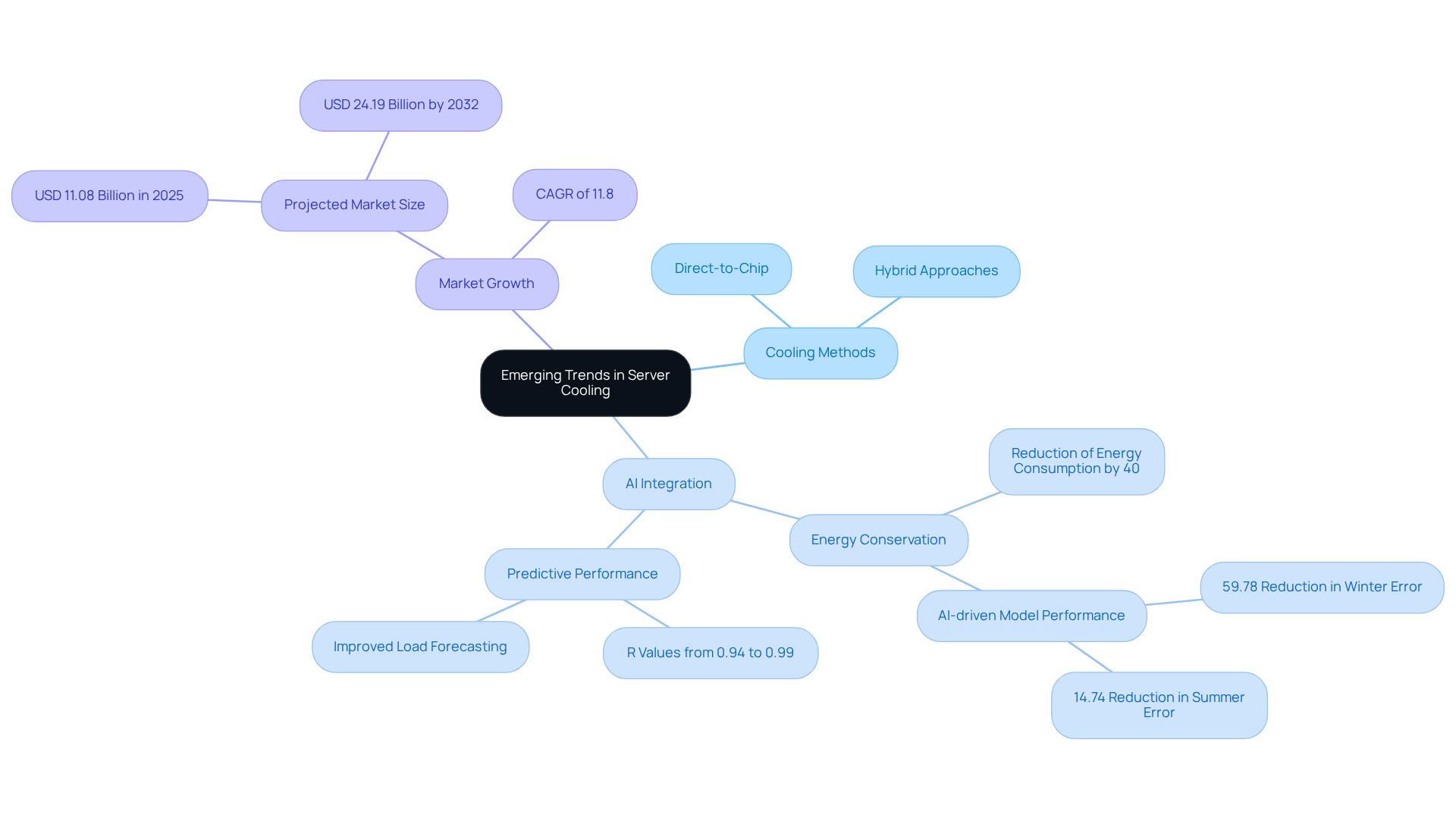
Conclusion
The landscape of server cooling solutions is evolving rapidly, propelled by the urgent need for efficient thermal management in high-density environments. Engineers must acknowledge the critical importance of selecting the appropriate cooling technologies—be it air, liquid, or immersion cooling systems—to maintain optimal performance and enhance the longevity of electronic equipment. Given the increasing complexity and heat output of modern servers, a strategic approach to temperature regulation is essential for ensuring reliability and operational efficiency.
This article has discussed key insights into various cooling methods, including:
- The cost-effectiveness of air cooling systems
- The superior performance of liquid cooling solutions
- The innovative benefits of immersion cooling technologies
Furthermore, the role of thermal sensors and smart control mechanisms in optimizing cooling efficiency has been emphasized, showcasing their potential to significantly reduce energy consumption while extending the lifespan of IT equipment.
As the demand for advanced temperature management solutions continues to rise, it is crucial for engineers to remain informed about emerging trends and innovations in server cooling technology. By adopting cutting-edge solutions and best practices, they can not only address the current challenges of thermal regulation but also contribute to sustainable operations in data centers. Embracing these advancements will ensure that electronic systems operate at peak efficiency, ultimately leading to enhanced performance and reduced operational costs in an increasingly competitive environment.
Frequently Asked Questions
What services does Gagner-Toomey Associates provide for electronics engineers?
Gagner-Toomey Associates offers innovative temperature regulation strategies tailored to the challenges faced by electronics engineers, emphasizing power management and thermal regulation with access to cutting-edge technologies.
What is the current market value of the electronic temperature control technology sector?
The global electronic temperature control technology market is valued at approximately USD 7.8 billion in 2023.
What is the projected growth rate for the electronic temperature control technology market?
The market is projected to expand at a compound annual growth rate (CAGR) of 12.4% through 2030.
Why is there an increasing demand for thermal management solutions in electronics?
The demand is driven by advancements in electronics and the anticipated doubling of energy usage in electronics by 2030, highlighting the need for improved technologies.
What role does air cooling play in server management?
Air cooling methods are cost-effective solutions for regulating server temperatures, utilizing advanced fans and ventilation to circulate cool air around server components.
What products does Gagner-Toomey Associates offer for air cooling?
Gagner-Toomey Associates offers a comprehensive range of DC input tube axial fans and centrifugal blowers optimized for performance, effectiveness, and low noise levels.
What challenges do air cooling systems face in high-density server configurations?
Air cooling systems may face challenges related to airflow design and equipment arrangement, which engineers must consider to enhance their performance.
What are the advantages of liquid cooling solutions for high-density servers?
Liquid cooling solutions effectively sustain optimal operating temperatures by directly absorbing heat from server components, especially in high-density environments where air cooling is less effective.
How much can liquid cooling solutions reduce power usage effectiveness (PUE)?
Some data centers have achieved a reduction in PUE by as much as 10 percent when implementing liquid cooling solutions compared to conventional air methods.
What is the expected growth rate of the liquid temperature regulation market?
The liquid temperature regulation market is anticipated to expand by over 24% annually over the next five years.
What is a Cooling Distribution Unit (CDU), and how is it used?
A Cooling Distribution Unit (CDU) is integrated within a comprehensive liquid temperature management strategy to enhance the practical efficiency of liquid cooling systems.
What should engineers consider when choosing a temperature regulation solution?
Engineers are encouraged to assess the specific temperature regulation requirements of their systems to identify the most suitable liquid or air temperature control solution, ensuring optimized performance and energy efficiency.

